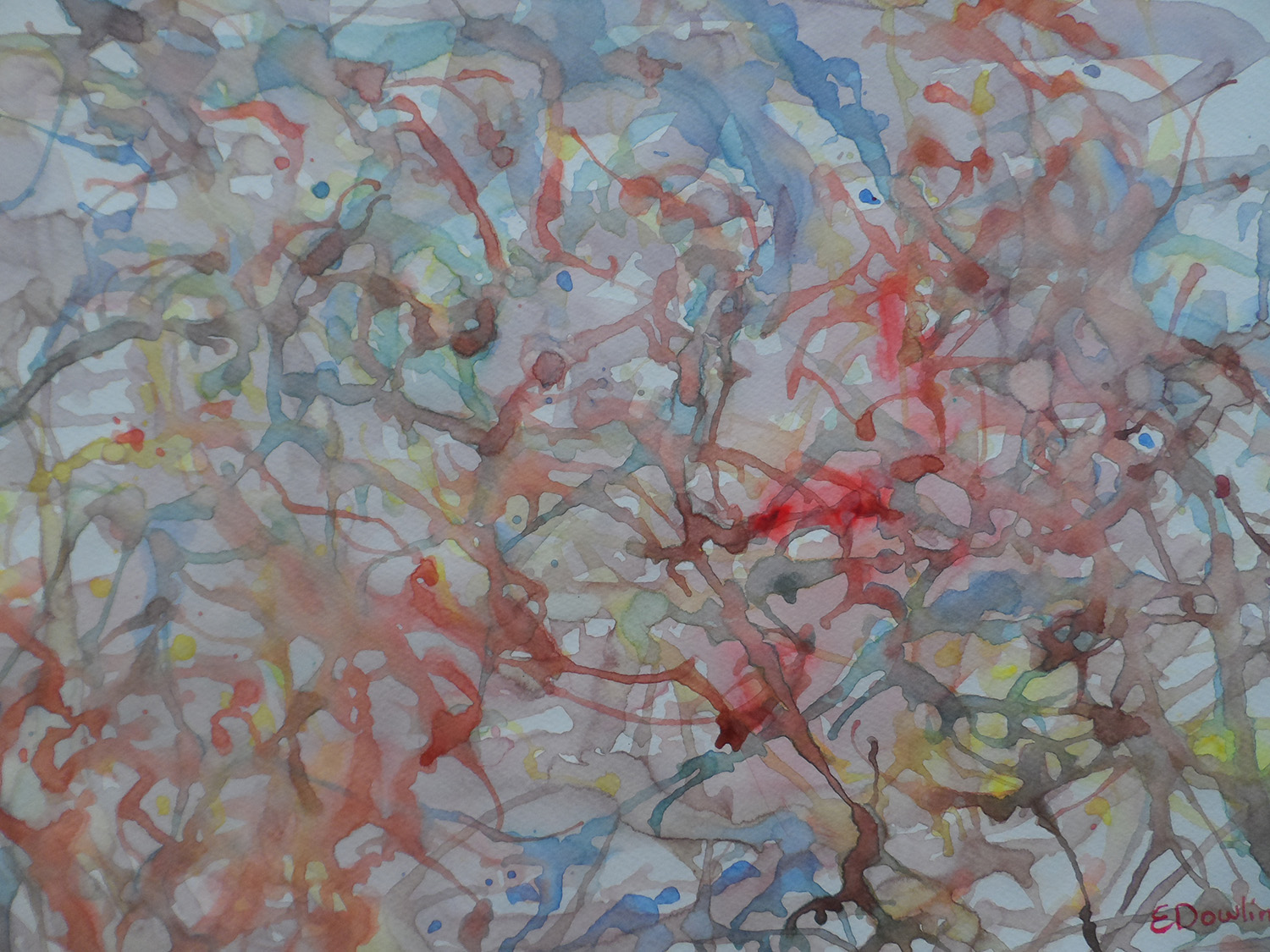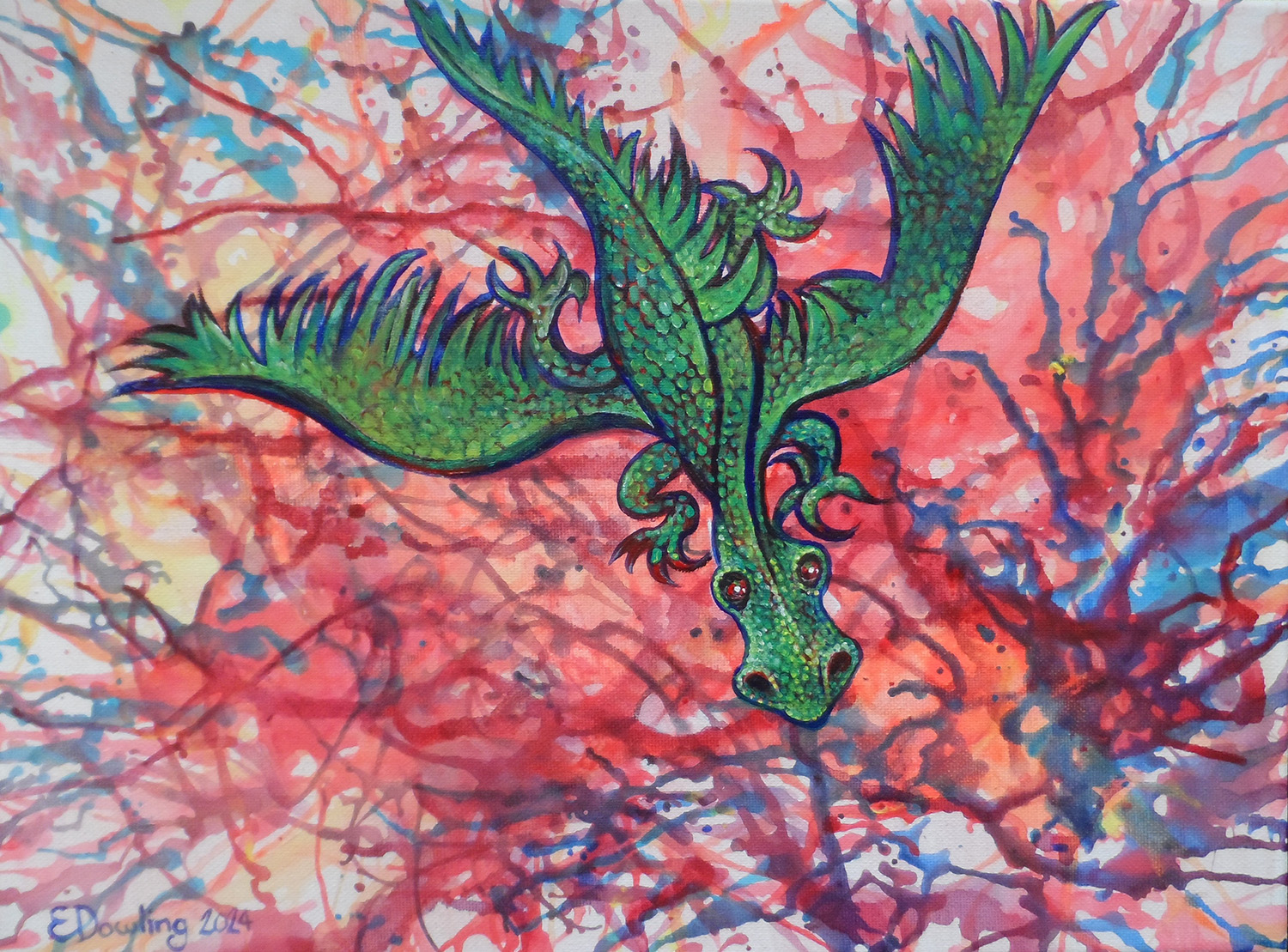Elizabeth Dowling
Curiosity
Artwork size: 42cm x 29.7cm
Artwork medium: Watercolour
Inspired by the idea of images emerging out of random marks, I feel a certain amount of trust in the process is required. Florence Cane’s Scribble technique and Winnicott’s Squiggle activity emphasised the importance of play in stimulating the imagination and working intuitively. From a scribble, dots, blots like those in the Rorschach Test or clouds for instance, a shape or image may be suggested. If so, the image can be ‘brought forward’ and developed, during which time feelings are processed and meaning can be explored. In psychoanalysis, the images are identified as being associated with the true self, the unconscious.
However, in creating these random marks I was fascinated with the interaction of colour as the paint flowed so quickly and helplessly across the paper. And as the paint dried, ‘nerve centres’ appeared, where movement was held. The use of a hair dryer freed me from any premeditated control over the process. Despite this, I did feel resistance but prompted myself to trust the process. I was being educated. With each layer, I became more trusting and surrendered to the experience until it finished. It was important to take this play seriously and respect the randomness, the ‘accidents’ and surprises as the work created its own statement. Because this work became the image itself, I decided to repeat the process and see if an image could be discovered. See “Discovery.”

Discovery
Artwork size: 41cm x 29.7cm
Artwork medium: Acrylic
Acrylic on canvas In psychoanalysis, images are identified as being associated with the true self, the unconscious. Florence Cane developed the Scribble technique using spontaneous line movement to stimulate the imagination. Out of lines of colour created randomly in layers I saw a dragon’s head and developed the image into a flying dragon. During this process, I imagined the words “into the chaos” as the creature seemed so determined, so empowered, to reach his goal. I related to the situation as if I was the dragon in a challenging situation of my own. All the anticipation of risk, uncertainty of decision, crossing a boundary and the courage to change its tension, were there. At first, the dragon was red, outlined and that was enough. After some distance from it, I realised the dragon should be complete – green and with scales. The process of completing the dragon in detail took some time but it was enjoyable and reassuring to work slowly. I felt it allowed me to feel closer to the impetus, texture and desperation of this creature as it powered ahead. And, in completing its form, the dragon became separated from the chaotic background, flying above it. This conveyed a new feeling of hope and independence in me. So, realising I had been asking a question and seeking a decision, this image became a healing one for me. The experience during the creative process posed the question and, trusting spontaneity, I was guided through the stages of awareness contained in this emotional process.

